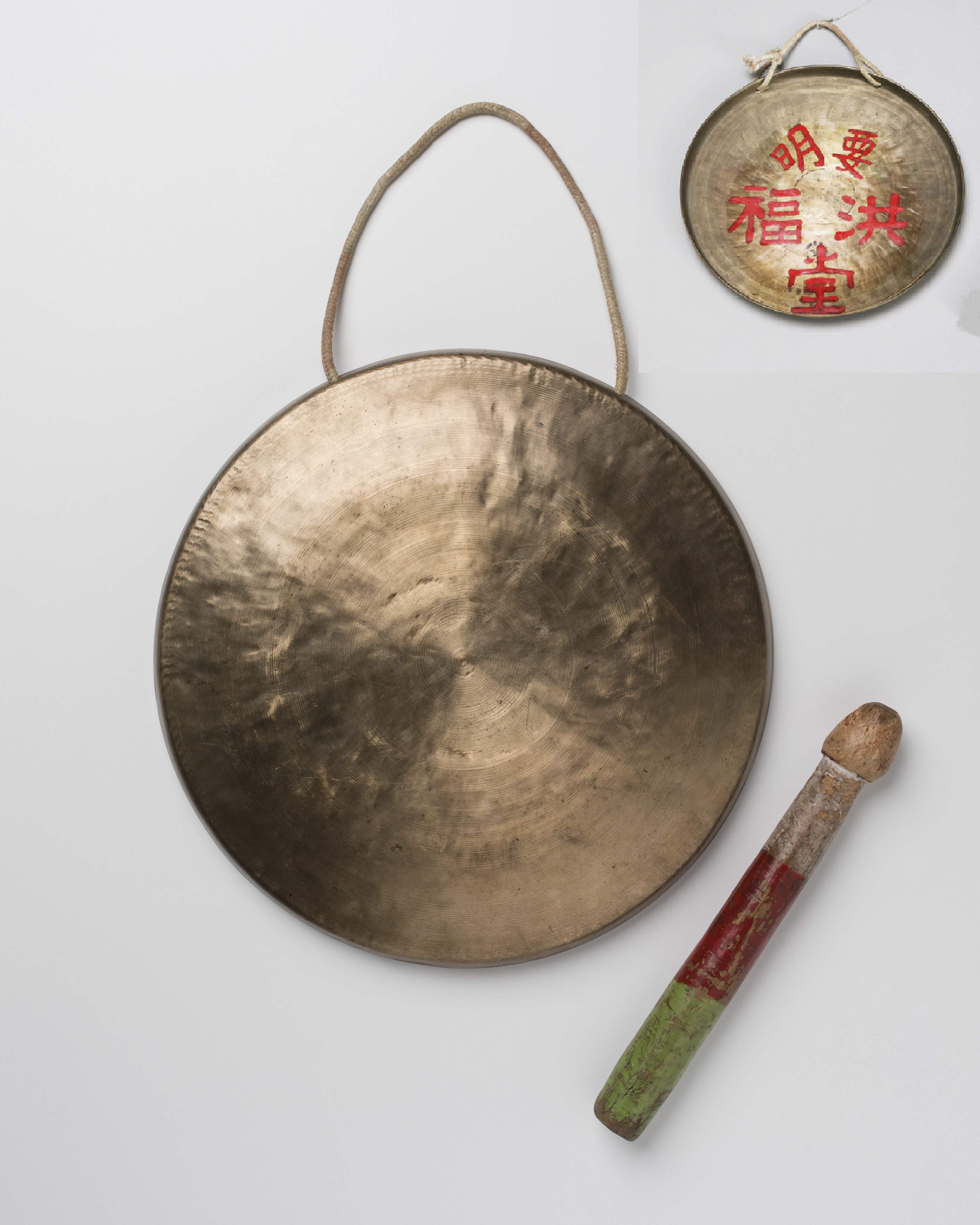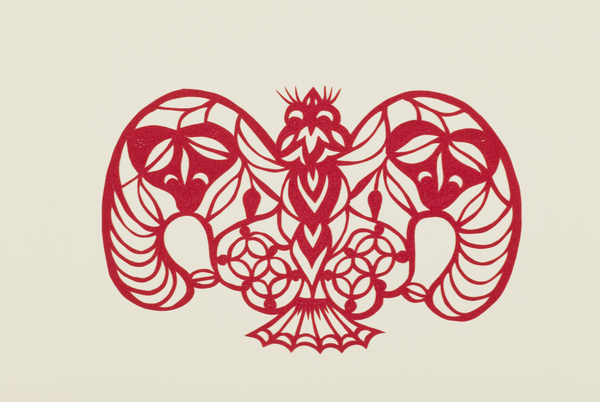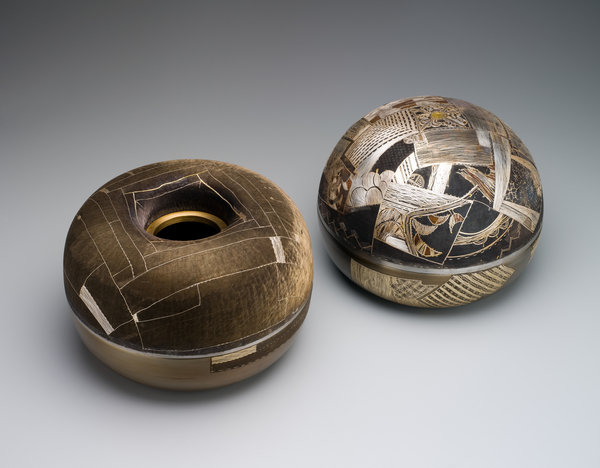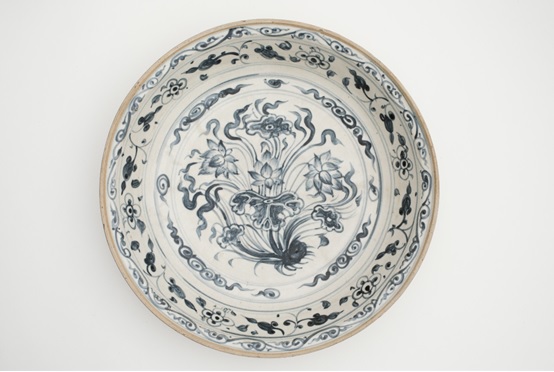The Lunar New Year is the most significant annual celebration for Chinese, Korean and Vietnamese cultures. Today (5 February 2019) marks the beginning of the Year of the Golden Pig. If you were born in 1935, 1947, 1959, 1971, 1983, 1995, 2007 or 2019 then it is your year! People born in the Year of the Pig are usually warm-hearted, good-natured, loyal, honest and gentle.
In celebration, this blog post highlights objects currently on display in our Reflections of Asia: Collectors and Collections exhibition that relate to cultural traditions associated with annual Lunar New Year festivities.

One of the most important Lunar New Year traditions in Chinese culture is the lion dance, a lively performance to conjure prosperity and good luck for the New Year. Accompanied by the music of beating drums, cymbals and gongs, the bright lion costumes also commonly feature red to represent bravery, green for friendship and goodwill and gold for liveliness and a dynamic spirit. This gong donated to the Museum by the Yiu Ming Society in 2003 is part of a collection of instruments used to welcome the New Year during Spring Festival celebrations in Sydney.

Papercuts are also used to celebrate special occasions, including Lunar New Year in Chinese culture. The colour red, being the ultimate Chinese symbol of joy, is often the colour of choice for making decorations to paste on windows or near entrances to bring good luck and create a festive atmosphere for celebration. This image symbolises jīn qián fú shòu (golden coin, good fortune, longevity), and features symbols and motifs associated with wishes for abundance and prosperity in the New Year.

This rice bowl set was designed and made by Korean-Australian artist Joungmee Do using the traditional Korean jewellery and metal craft technique of jjoeumipsa (inlay). The design was inspired by traditional Korean textile patterns such as those used in bojagi (Korean wrapping cloths), an ever-present object for centuries in Korea, particularly during the Joseon dynasty (1392-1910).
Whilst the custom of making and using bojagi originated at court with strict rules of etiquette for wrapping gifts for crown princes and princesses on birthdays, New Year’s Day, weddings and other special occasions, bojagi were also omnipresent in the daily lives of Koreans of all classes for covering, storing and carrying objects.
According to folk beliefs, blessings and good fortune (pok) were enclosed or captured through both the process of making the cloth and wrapping objects, hence their common association with the presentation of gifts on special occasions such as New Year. Today, Korean Lunar New Year celebrations, or Seollal, continue to be a time for remembering ancestors, visiting family, feasting on traditional dishes together and playing games such as Go-Stop and Yut-Nori.

This stoneware dish with a lotus pond design was made in Vietnam around 1400-1450. Whilst this dish is not directly linked to Lunar New Year, or Tết celebrations in Vietnam, the lotus pond design is symbolic of optimism for the future.
Influenced by a desire to ensure that what happens on the first day of the year places a family in good stead for the remainder of the year, Vietnamese Lunar New Year celebrations involve significant preparation. Often a week before Tết, household members clean the house, garden and family altars and redecorate them together as well as settle debts, purchase new clothes for the year ahead and prepare special holiday foods such as bánh chưng and bánh dầy.
A New Year’s Eve feast brings family together for the last meal of the year to reflect on the past months and anticipate the New Year. The first day of the New Year is reserved for nuclear family celebrations along with an important ritual, xông đất, whereby the first visitor the family receives for the year is considered in relation to the blessings and fortune their temperament may bring for the year ahead. Another integral Tết custom involves the preparation and presentation of a tray of five fruits for the family altar as both an offering of gratitude for ancestors and aspiration for prosperity in the New Year.
Lunar New Year is also celebrated in countries including Singapore, Indonesia, Malaysia, Myanmar, Thailand, Cambodia, the Philippines and Mauritius. To see more cultural objects from the Asian region, visit the Reflections of Asia exhibition at the Powerhouse Museum during the 2019 festival.


